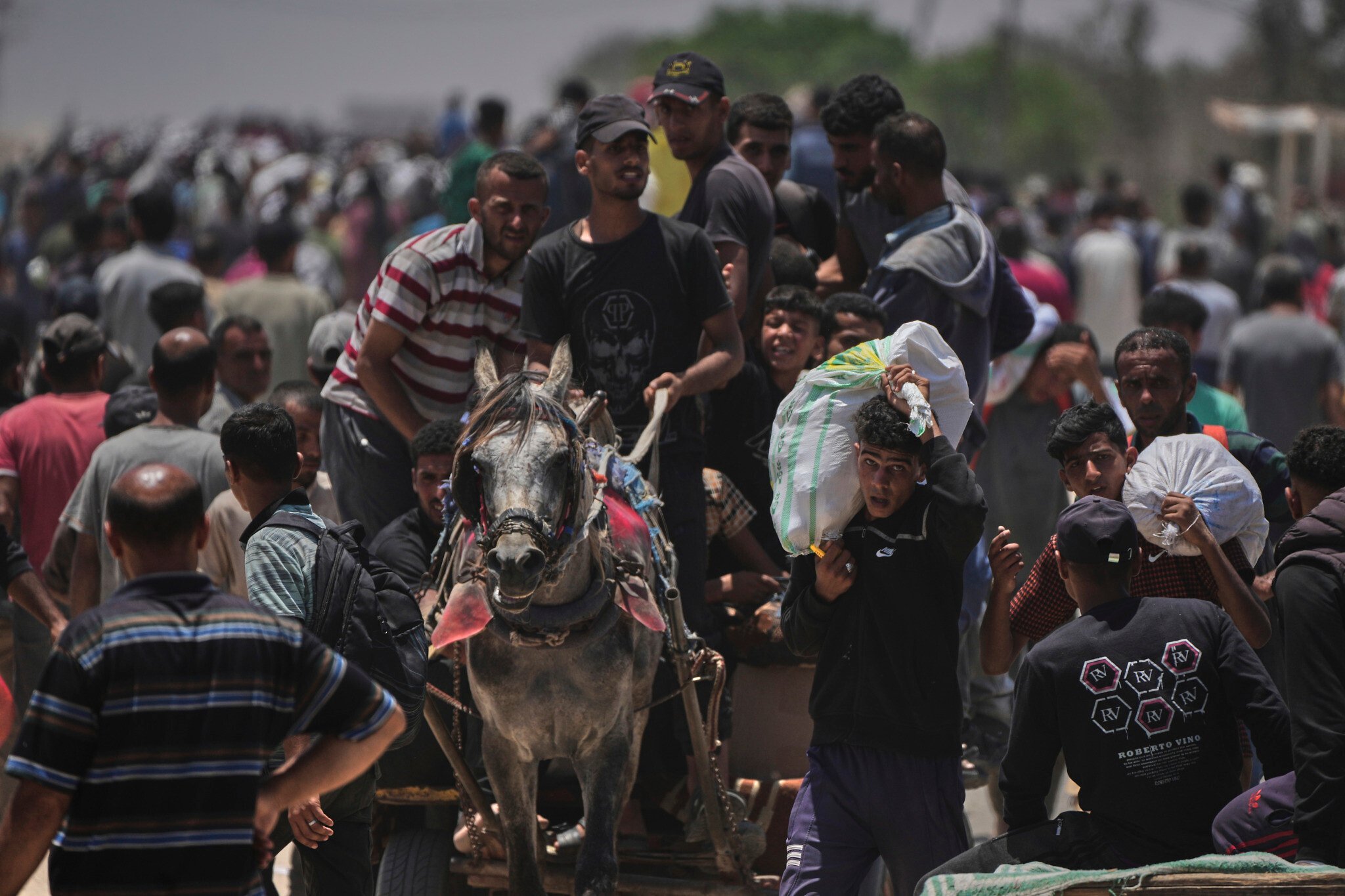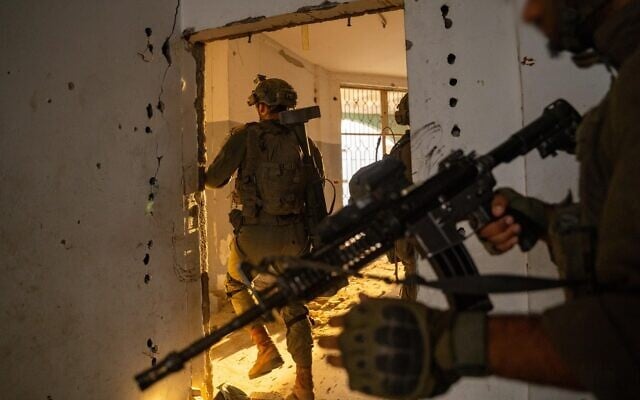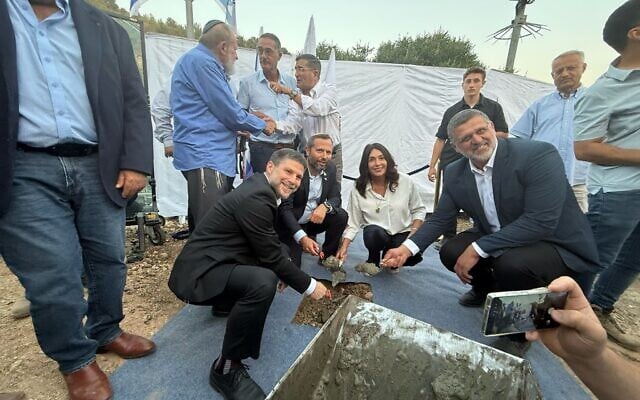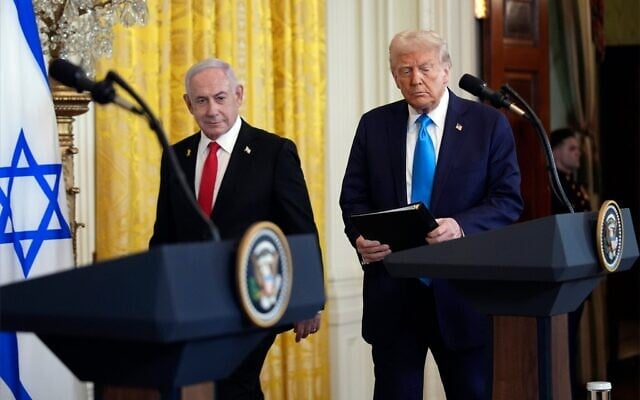



This Editor’s Note was sent out earlier Wednesday in ToI’s weekly update email to members of the Times of Israel Community. To receive these Editor’s Notes as they’re released, join the ToI Community here.
What exactly is the Israeli government, and by extension the IDF, seeking to achieve in Gaza?
The question seems absurd, 20 months into a war that began with Hamas’s invasion and massacre.
After all, we all know Prime Minister Benjamin Netanyahu’s stated goals: war until complete victory — comprising the destruction of Hamas, the return of all the hostages, the elimination of any future threat to Israel from Gaza, and (recently added) the implementation of US President Donald Trump’s plan for the relocation of the Gaza populace.
But this doesn’t really square with declared ministerial policy, with Trump’s current mindset, or, indeed, with the day-to-day IDF military campaign.
While Netanyahu speaks in generalities about relentless progress in the campaign to destroy Hamas, insisting that absolute victory is at hand and deriding his critics, far-right ministers Bezalel Smotrich and Itamar Ben Gvir, without whom Netanyahu would lose power, specifically advocate the morally untenable and unworkable departure of Gaza’s population to places unknown, the permanent Israeli occupation of the Strip, and the renewal of Jewish settlement there.
Trump in February delighted the far right by calling for the enforced removal of Gazans, though even that initial plan envisioned a US takeover of the Strip, rather than Israel’s permanent reoccupation and settlement there. He has gradually changed tack, however, first switching to a call for Gazans’ voluntary relocation, then dropping talk of moving Gazans out and instead focusing on concern for their well-being and the need to ensure they receive humanitarian aid. This week, he reportedly told Netanyahu to just sign a deal already — to try and get back all the hostages and end the war, potentially reviving regional normalization efforts and isolating Iran.
If the disconnect is apparently widening between the US president and the Israeli prime minister — on Gaza, as well as on how to tackle near-nuclear Iran — the disconnect between the Israeli government and the IDF is a minute-by-minute concern.
As ordered by the political echelon, the military is deepening its physical control of Gaza. It controlled 40% of the Strip when the last hostage-truce framework collapsed in March. It now holds some 50%, military sources say, and its declared goal is to take control of 75%, with the two million-plus Gazans largely concentrated in three mainly coastal mini-enclaves.
And then what?
As far as repeated questioning of military sources can establish, the IDF actually doesn’t know.
Expanding its areas of control involves the IDF ordering civilian evacuations and then cleaning out the evacuated areas — blowing up tunnels and booby-trapped buildings, confronting those Hamas gunmen who have not slipped away with the noncombatants to the ostensibly safe zones, and then staying put to await further orders.
Smotrich and Ben Gvir anticipate that the IDF will remain in perpetuity, to safeguard the eventual return of Jewish settlers.
For his part, Netanyahu used to speak about a “day after” in Gaza in which Hamas would be eliminated as a fighting force, Gaza would be demilitarized, the Gaza populace would be deradicalized and re-educated to the point where the threat of further October 7 atrocities was alleviated, and an alternate governing mechanism would be enabled. But he has since adopted Trump’s “relocate Gazans” plan, even as the US president has moved away from it.
Some military sources speculate that the IDF may eventually be asked to oversee a controlled return of the Gaza populace to their largely ruined home areas, under a process that would necessitate screening the returnees to ensure that Hamas forces do not simply come back with them. However nice in theory, the idea is impractical. The IDF is not capable of controlling, much less screening, large masses of civilians.
Evidence of that inability has been a terrible daily reality these past few weeks, with dozens upon dozens of Gazans reported killed in the areas surrounding the Gaza Humanitarian Foundation’s aid distribution hubs. Military sources have insisted, as regards most of these incidents, that IDF troops have not fired inside, at or immediately outside the distribution points, but acknowledge firing “warning shots” when facing large crowds of Gazans heading toward the aid hubs outside the designated routes and outside the designated opening hours.
As far as the aid is concerned, the IDF has taken responsibility for safeguarding the GHF operation — in a framework that supersedes the UN, and thus renders Israel the prime responsible address for the feeding of Gazans. But it is not trained or equipped to fully do so. The result is that a hurriedly constructed program, intended to prevent Hamas’s ongoing looting of aid, is proving bloody and intermittently unworkable in practice, with Hamas predictably doing everything in its power to destroy the effort, and the IDF facing off against huge crowds of desperate Gazans.
Hamas must not be allowed to reconstitute itself. Even now, it maintains a rule of fear in parts of Gaza, is able to loose off the occasional rocket, and can drop the occasional explosive drone on troops. Its “destroy Israel” ambition is undimmed. Ending this war would and should not mean ending the battle against Hamas; it will, without doubt, provide Israel with innumerable essential reasons to relentlessly target it in the future, and Israel will know better than to encourage Qatar to fund it.
At the same time, domestic and global criticism of the war is growing — especially since the government chose in March not to move ahead with the second and third phases of the January deal it had unanimously endorsed, which was intended to secure the release of all hostages and end the war, and instead resumed the military campaign. Growing, too, is US presidential impatience, in part reflecting deepening dismay from within Republican ranks, and Trump has vast weapon-supply and diplomatic leverage to exert over Netanyahu should he so choose.
Hamas’s monstrous slaughter is barely remembered even among those parts of the global political leadership and public that ever cared. Fifty-four hostages have been held for 614 days, and of the male soldiers abducted alive on October 7, 2023, only Edan Alexander has returned. The prime minister is dependent on the “war must not end” far-right and, his particular preoccupation this Wednesday, on the “we’d rather die than serve in the IDF” Haredi leadership.
What exactly is the Israeli government, and by extension the IDF, seeking to achieve in Gaza? Not such an absurd question, after all.



